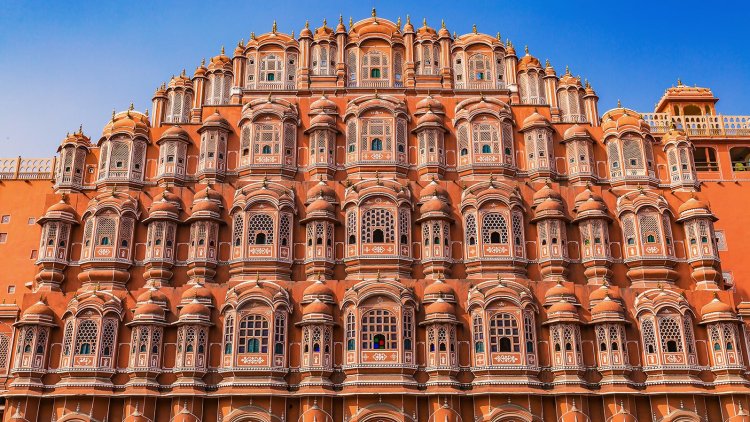Jaipur's Hawa Mahal: A Fascinating Architectural Marvel
Explore Jaipur's Hawa Mahal "Palace of Winds," an architectural marvel. Delve into its history, intricate design, and cultural significance. Unveil India's royal past.

Amidst the vibrant and culturally rich city of Jaipur in Rajasthan, India, stands the iconic Hawa Mahal, a resplendent palace that has captivated visitors for centuries. Often referred to as the "Palace of Winds," this architectural wonder offers a unique blend of history, culture, and intricate craftsmanship. In this blog, we will delve into the captivating tale of Jaipur's Hawa Mahal, exploring its history, design, and the enchanting stories that surround this breathtaking structure.
- A Historical Gem
Built-in 1799 by Maharaja Sawai Pratap Singh, the Hawa Mahal is a stunning extension of the Jaipur City Palace. Its primary purpose was to provide royal women with a discreet vantage point from which they could observe the bustling street life and various processions without being seen. The five-story structure exemplifies the brilliant fusion of Rajput and Mughal architectural styles, making it a true representation of the region's rich cultural heritage.
- Intricate Architecture
Hawa Mahal's mesmerizing facade is its most distinctive feature. The palace boasts a honeycomb-like lattice of 953 small windows, known as "jharokhas," intricately carved from pink sandstone. These jharokhas not only allow a gentle flow of air, keeping the interior cool during scorching summers, but they also create a captivating play of light and shadows throughout the day, adding to the palace's allure.
- Symbolism and Design
The five floors of the Hawa Mahal are connected by ramps rather than stairs, a unique feature that allows the royal ladies to ascend comfortably without having to use steps. The design of the palace also imitates the crown of Lord Krishna, a significant deity in Hindu mythology, further elevating its cultural significance.
- Legends and Stories
As with any historical monument, Hawa Mahal is steeped in intriguing legends and stories. One such tale revolves around the palace being built for the Queen's entertainment, while another suggests it was constructed to honor Lord Krishna. The allure of these legends adds an element of mystique to the already captivating palace.
- A Photographer's Delight
For photographers and enthusiasts of architectural beauty, Hawa Mahal is a true visual treat. The symmetrical patterns, ornate carvings, and the ever-changing interplay of light and shadows make it a favorite subject for photography and painting.
- Cultural Significance
Hawa Mahal is not just a tourist attraction; it holds immense cultural significance for the people of Jaipur. It is a reminder of the city's royal past, and its image often graces souvenirs and promotional material, representing Jaipur's rich cultural heritage on a global platform.
- Preservation Efforts
Preserving this architectural gem for future generations is of utmost importance. The authorities have taken initiatives to conserve and restore the Hawa Mahal to its former glory. Additionally, the palace is open to the public, allowing visitors to immerse themselves in the grandeur of its history and architecture.
Conclusion
Hawa Mahal stands as an architectural masterpiece and an emblem of Jaipur's rich cultural heritage. With its exquisite craftsmanship, unique design, and captivating legends, the Palace of Winds continues to leave visitors awe-inspired. As the sun sets over the horizon, casting a golden glow upon the sandstone facade, it serves as a poignant reminder of the opulence and splendor of India's royal past, inviting travelers from across the globe to marvel at its grandeur.













